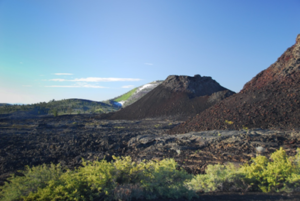What punctuates the geologic time scale?
Presented by Peter L. Ward, Geologists of Jackson Hole.
Geologic time is divided up into eons, eras, periods, epochs, and ages that typically end worldwide quite abruptly. We see distinct layers, in the Grand Canyon for example, where the depositional environment of sedimentary rocks changes very rapidly from sandy desert, to swamp, to shallow ocean, to limestone reefs, and such, where fossil evidence of dominant life forms changes in a geologic instant, and where availability of fossil fuels and minerals changes suddenly. What physical events make it possible for geologists to correlate rocks in distinct layers worldwide?
Most of these rapid changes are contemporaneous with major, rift-related, subaerial basalt flows such as those we see in the Snake River Plain west of Idaho Falls. Flows from the same rift zone erupted in rapid sequence and covered areas from a few square miles to millions of square miles, areas as large as all of Europe or even all of the United States (3.8 million square miles). These flows are extruded over periods of months to hundreds of thousands of years, causing minor to major global warming, minor to major ocean acidity, extinctions of as much as 96% of all species, and sudden ends to glacial epochs. Come explore the details. Slides


